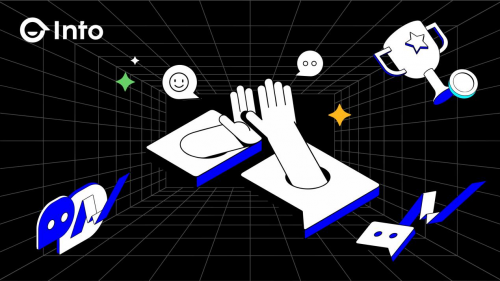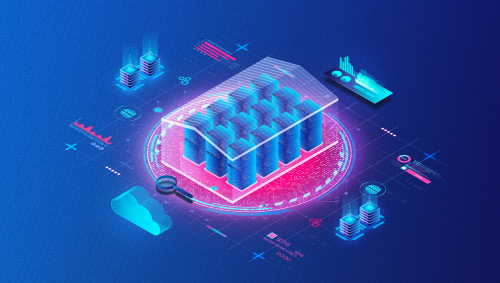Currently, blockchain and artificial intelligence are leading the mainstream direction for the next few hundred years. Traditional social media is as scattered as an island, making it difficult to achieve seamless flow of data and information. With the rise of Web3, peoples desire for new social methods has become particularly urgent. The future of Web3 social networking lies in connection, sharing and innovation. INTO is like a bright star, illuminating this unknown territory and depicting a more open and free social future for us.
The uniqueness of INTO lies not only in technological innovation, but also in its ability to meet users pursuit of openness and freedom. What users experience on the INTO platform is not only the convenience of socializing, but also the pleasure of connecting to the world. Interoperability means seamless connection between different platforms, and standardization ensures that this connection occurs smoothly and securely on a global scale. This is about how to break down data silos while maintaining individual freedom and security, and INTO is leading this truly global social network revolution.

Breaking down silos and building a new future for the World Wide Web
Web3, as a representative of the next generation Internet, its core features are decentralization, distributed accounting and user sovereignty. Under this framework, social networks are no longer closed systems controlled by a single or a few centralized entities, but become a decentralized, open and autonomous ecosystem. This fundamental change makes it possible to achieve true user autonomy, data autonomy and value interconnection.
In this era, interoperability and standardization are key to building a global social network. INTO deeply understands this and is not only committed to technological innovation, but also strives to trigger a revolution in the field of social Internet. Interoperability means that users can easily move between different platforms, while standardization ensures that this connection is made securely and efficiently. INTO plays a key role in this battle about how to break down silos and build a truly global social network while maintaining individual freedom and security.
First of all, in traditional social networks, user data and content are controlled by centralized platforms, which not only limits the circulation and sharing of data, but also makes users lack sufficient control over their own data. On the contrary, in the social network of Web3, users can directly own and control their own data through blockchain technology. However, the advantages of this decentralization can only be fully realized when various platforms can communicate with each other and share data. Therefore, interoperability becomes the key to connecting these decentralized nodes and realizing the circulation of data and value.
Second, standardization is the cornerstone of interoperability. In Web3 social networks, different platforms may be built based on different technology stacks, protocols and standards. Without a unified or at least compatible standard, it will be difficult to effectively exchange and interact data and information between different platforms, thus forming new information islands. For example, if different decentralized identity (DID) solutions are not compatible with each other, users may need to maintain multiple different identities on different social platforms, which is contrary to the user sovereignty and convenience that Web3 advocates. Therefore, formulating a series of common standards will not only help promote collaborative work between different platforms and applications, but is also the key to ensuring the overall health and sustainable development of the ecosystem.
Furthermore, from a deeper perspective, Web3 social interoperability and standardization are not just technical issues, but also a reflection of community consensus and collaboration. Web3 emphasizes a distributed governance model, which requires community members (including users, developers, content creators, etc.) to participate in the construction and governance of the network. In such an environment, interoperability and standardization are not just coordination at the technical level, but also the result of mutual understanding, collaboration and consensus among community members.

To sum up, if social networks in the Web3 era want to truly realize the concept of decentralization, they must break the boundaries and islands in the traditional sense and achieve seamless connections between different platforms and users through interoperability and standardization. This is not only for the advancement of technology, but also for building a new social ecosystem that is more fair, transparent and user-led.
Remove barriers and realize the free flow of data and value
In the world of Web3, interoperability and standardization are not only technical concepts, but also a new network philosophy. They represent the core values of decentralization and distribution. Web3 social interoperability and standardization are essentially a reconstruction and transcendence of the existing social network ecosystem. In the process, we will see how decentralized technology can break the limitations of traditional social media and build a more open, free and connected digital society.
First of all, we need to understand the foundation of Web3 social networking-blockchain technology. Blockchain provides a decentralized data storage and transmission platform. Through decentralized design, INTO breaks geographical and cultural restrictions, enabling users to communicate freely around the world and share opinions and opinions from different regions and backgrounds. experience. This diversified exchange promotes a broader collision of ideas and provides richer soil for innovation.
On such a platform, personal data is no longer controlled by a single centralized entity, but becomes the users own asset. This decentralized nature naturally leads to the need for interoperability - different social platforms, applications and services need to be able to exchange data and communicate without the intervention of a centralized authority.
At the same time, the realization of interoperability in the Web3 social platform needs to rely on commonly observed standards and protocols. These standards and protocols cover not only data formats and communication protocols, but also smart contract execution logic, authentication mechanisms, and encryption technologies. For example, decentralized identity (DID) becomes key to achieving interoperability. Through DID, users can maintain consistent identity authentication across different platforms while managing and controlling their own data and privacy. This fluidity of identity and data is at the core of Web3 social interoperability.

In addition, Web3 social standardization also includes how content is processed and shared. In traditional social media, content is often owned and controlled by the platform. But in the world of Web3, content can become users’ assets through methods such as non-fungible tokens (NFT). This model not only guarantees the rights and interests of content creators, but also provides the possibility for cross-platform sharing and flow of content. It will further enhance the cohesion and inclusiveness of social networks and lay a solid foundation for building a diverse, open and free Web3 social environment.
The Rise of a New Social Network: Unlocking the Power of Interoperability
In the future vision of Web3 social networks, achieving interoperability and data standardization between platforms is a key task. This is not only a technical challenge, but also a profound innovation in understanding the nature of social networks. Especially for pioneers like INTO, they are not just building a product, but paving a path to a broader social universe.
First, at a technical level, the key to achieving interoperability lies in the development of a common set of standards and protocols. This means that different Web3 social platforms need to work together to jointly determine standards for core technologies such as data formats, identity authentication methods, and communication protocols. INTO has made important progress in this regard. It not only implements these standards on its own platform, but also actively engages in dialogue and cooperation with other platforms to push the entire industry towards standardization.
Web3 social interoperability and standardization are the keys to building a decentralized, free-flowing digital social ecosystem. A specific example is INTOs application of SoulBound Token (SBT). As a representative of digital identity, SBT not only has rich application scenarios within the INTO platform, but can also be recognized and utilized by other Web3 social platforms in the future. This cross-platform identity recognition and reputation accumulation mechanism provides users with a seamless experience in different Web3 social environments, while also strengthening the trust and security of the entire network.
However, technology is only one aspect. What is more important is establishing an ecosystem that supports interoperability. This requires efforts from multiple levels such as policy, governance, and cooperation. The INTO project also shows foresight in this regard. By establishing partnerships with communities in many countries and regions around the world, and cooperating with partners from other leading platforms and well-known enterprises, INTO plays an important role not only in technology but also in ecological construction.
As a pioneer of Web3 social protocols, the INTO project plays a crucial role in this process. It not only technically promotes the interoperability and standardization of social networks, but also plays a positive role in ecological construction and industry cooperation.
Towards a new era of interconnected Web3
With the continuous development and maturity of the Web3 social field, we are already standing on the threshold of a new era. In this era full of changes and opportunities, projects such as INTO are not only pioneers in technology, but also bridges and links to build a new social ecosystem. From encrypted wallets to SoulBound Token, from SocialFi to AI auxiliary tools, INTO has paved a colorful and solid path for the future of Web3 social networking with its innovation and comprehensiveness.

Interoperability and standardization, in INTOs practice, are not only the embodiment of technical specifications, but also the demonstration of a new social concept. By creating an open, free, efficient, secure and compatible decentralized social environment, INTO not only solves privacy and security issues in traditional social networks, but also promotes seamless connections and data sharing between different platforms. This not only enhances the user experience, but more importantly, provides unlimited possibilities for innovation and collaboration on a global scale.
Looking to the future, as the number of users continues to grow and the market expands globally, INTO will continue to lead the development of Web3 social. INTOs success is not only reflected in the rapid growth of the number of users, but also in its true understanding and practice of Web3 social networking. This is not just the rise of a platform, but a challenge to the traditional social paradigm, breaking the boundaries of the past and allowing people to connect and communicate in new ways.
From individual to collective, from local to global, INTO is becoming a key platform connecting different cultures, ideas and values. In this process, interoperability and standardization will play a vital role, not only providing users with a richer and more personalized experience, but also helping to build a healthier, open and collaborative Web3 ecosystem.





